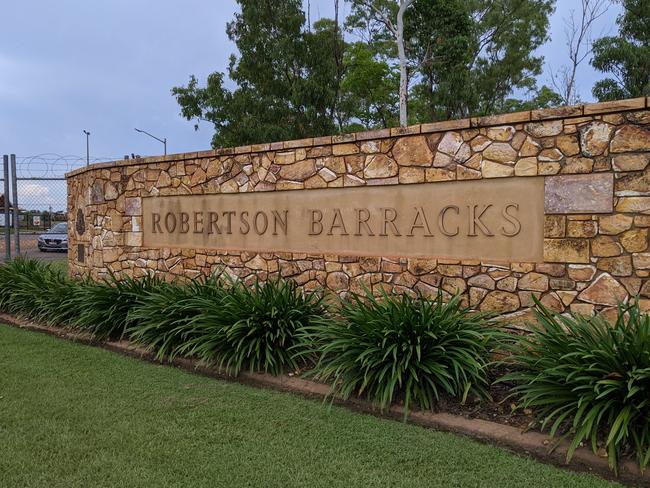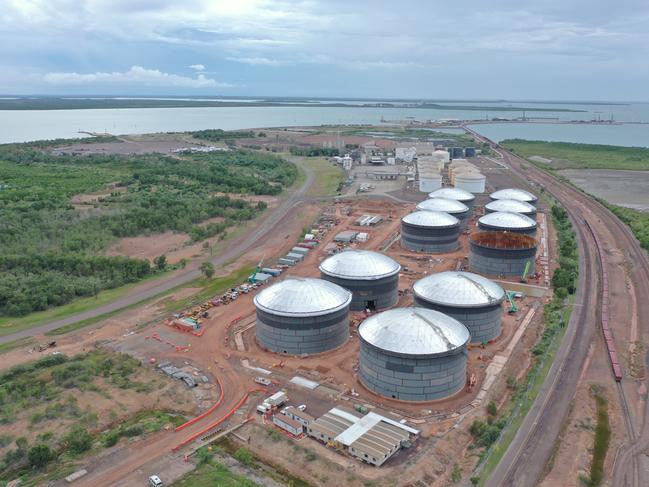Defence Strategic Review reveals key role for Northern Australia
Australia’s Defence Strategic Review has been released and there is good and bad news for Northern Australia. Read what it means for the NT and vote in our national security poll.
Northern Territory
Don't miss out on the headlines from Northern Territory. Followed categories will be added to My News.
The national significance of key Northern Territory infrastructure assets has been singled-out in a crucial new defence review released on Monday.
The Defence Strategic Review found recent severe flooding which closed the Stuart Highway and Alice Springs to Darwin railway this year had “highlighted the importance” of well-maintained resilient civil infrastructure, including ports and roads that support the network.
It’s the second successive year both the Stuart Highway and railway were shut down after heavy rainfall with commercial transport forced to re-route through Mt Isa en route to the Top End.

The future role of Robertson Barracks, home to the 1st Brigade, in our ongoing defence is unclear, but could potentially be beefed up.
The report forecasts “significant changes to army force posture and structure”, saying army combat brigades “may be re-roled and select capabilities postured in Northern Australia”.
The strategic importance of Northern Australia is re-enforced and strengthened under the review’s recommendations.
One of six key recommendations is to improve the Australian Defence Force’s capacity to operate from Australia’s northern bases.
The report found Australia lacked effective defence capacity against a high threat level and this could only be achieved by working with the United States and other partners to develop a favourable regional environment.
It warned that while invasion “of the Australian continent is a remote possibility”, there is a greater threat from coercive attacks through cyber security or disruptions to sea lines of communication.

The report also warns the risk of nuclear escalation must be regarded as real and recommends a greater use of long-range missiles for our defence.
Key to the ADF’s future defence strategy is enhanced undersea warfare capabilities underpinned by the acquisition of conventionally-armed nuclear-powered submarines.
It also flags the end of the 10-year warning time for defence conflict preparation, focusing instead on the periods between 2023-25, 2026-30 and the period from 2031 and beyond.
“National defence requires a re-posturing of defence, particularly an enhanced network of bases, ports and barracks across Northern Australia,” the review said.
“Comprehensive upgrade works on these bases must commence immediately, and fuel storage and supply issues should be rectified.”
Defence has committed $747m to upgrade Robertson Barracks, Kangaroo Flats, Mount Bundey and the Bradshaw Training Ground, while a US government fuel tank farm at East Arm is due for completion by September 15.
The report recommends that Australia’s primary area of military interest should include “our northern approaches” encompassing the north-eastern Indian Ocean through maritime Southeast Asia into the Pacific.

In Chapter 10 — Force Poster and Accelerated Preparedness, the report found the key line of forward deployment for the ADF stretched across Australia’s north from the Cocos Islands off the northwest coast, through RAAF bases Learmonth, Curtin, Darwin, Tindal, Scherger and Townsville.
The report said recommendations in the 2012 Force Posture Review and 2013 defence white paper allocated resources to improve the network of bases, ports and barracks and that “most of these recommendations relating to the northern bases have not been implemented”.
“Irrespective of this history, it is now imperative that our network of northern bases is urgently and comprehensively remediated.”
The report says northern airbases, including RAAF bases Darwin and Tindal, must be viewed as “critical” for our defence and must now be viewed as a “holistic capability system” and managed by the Chief of Air Force.
The report demanded “immediate and comprehensive” work on bases including hardening and dispersal, runway and apron capacity, fuel storage and supply, aviation fuel supply and storage and better connectivity and security.
The report recommends upgrades begin immediately to our northern network of bases, ports and barracks.
Master Builders NT, the peak body overseeing the Territory’s construction industry, said the report charted a path for jobs and economic growth.
“It is clear that from now the nation’s security will be orientated to Northern Australia, something that Territorians have long believed should be the case,” Mr Carter said.
“The review calls for the immediate upgrade and development of the network of bases in the north which is good news for the Territory construction industry, and wider economy, given the number of existing bases around Darwin.
“The federal government’s commitment to the north can create a once in a generation opportunity to substantially develop Darwin and strategic regional centres.
“This can’t just be about defence facilities but will require a whole of government response at both Territory and federal government level to ensure that there is sufficient housing, population, and social infrastructure to sustain the nation’s defence posture in the north.
“It means that the NT government and industry must continue to build on our record of working together to put our best foot forward.”
More Coverage
Originally published as Defence Strategic Review reveals key role for Northern Australia





